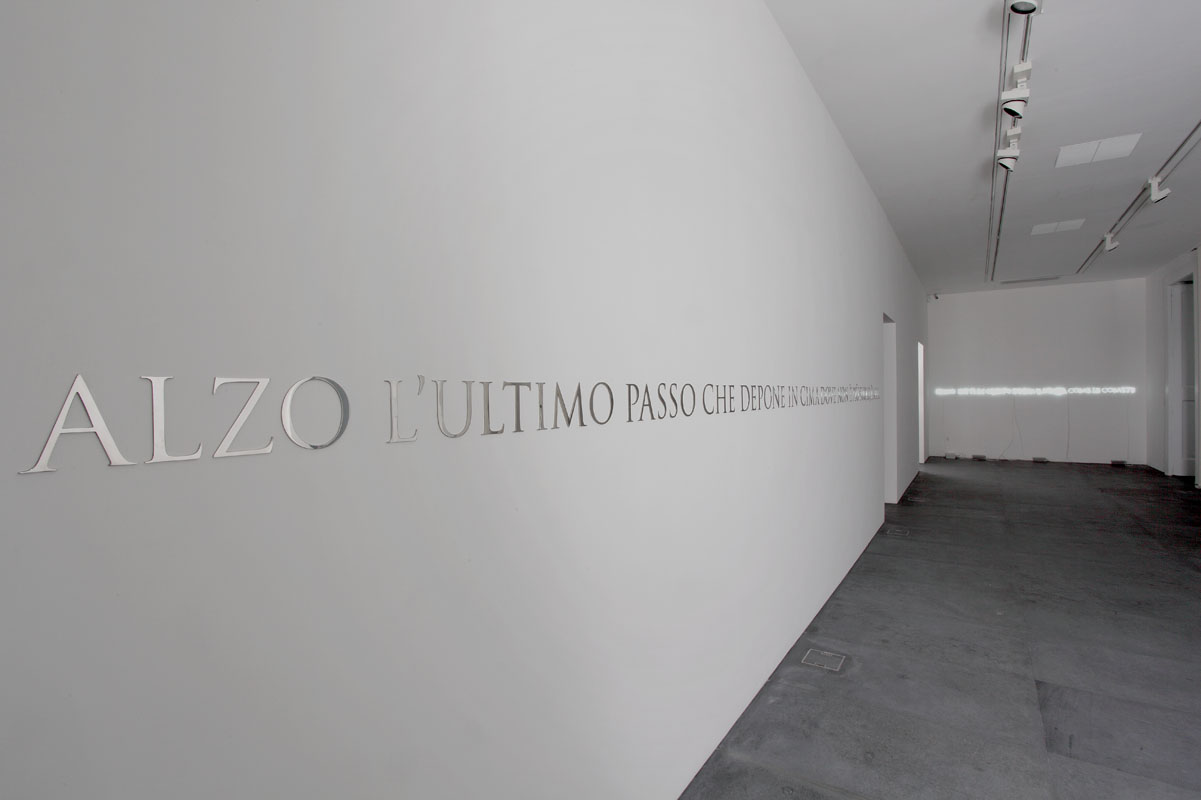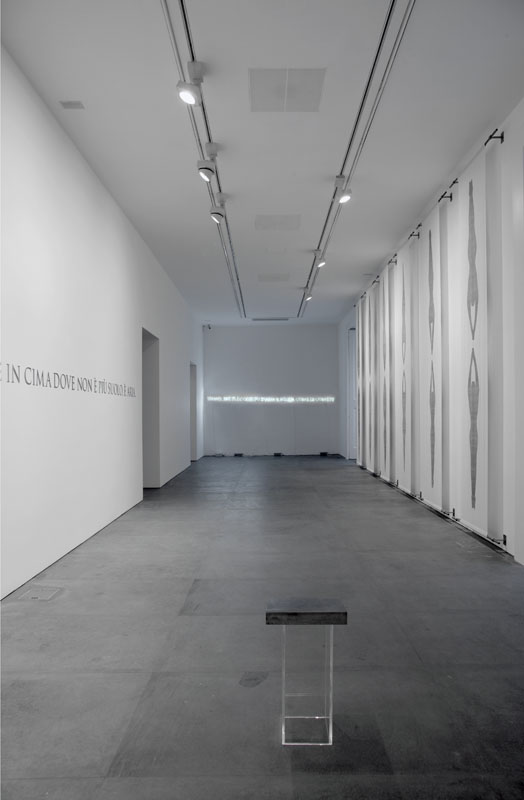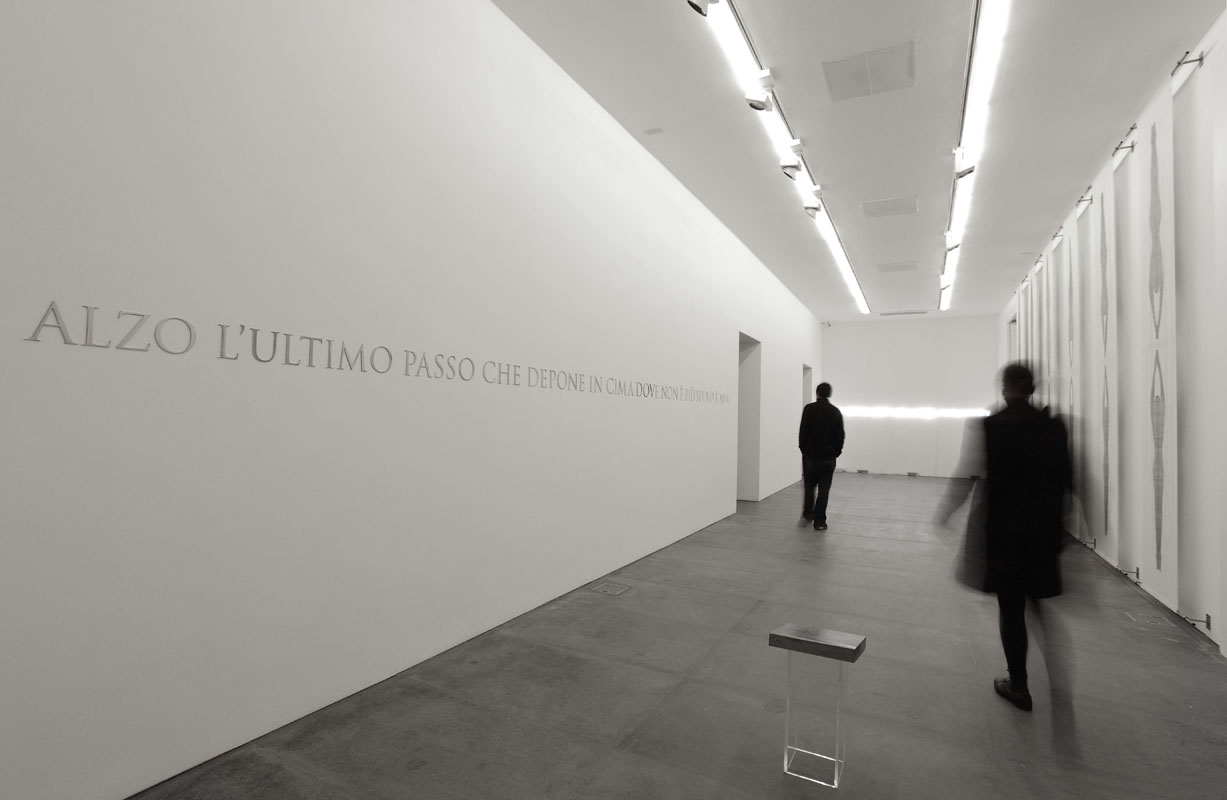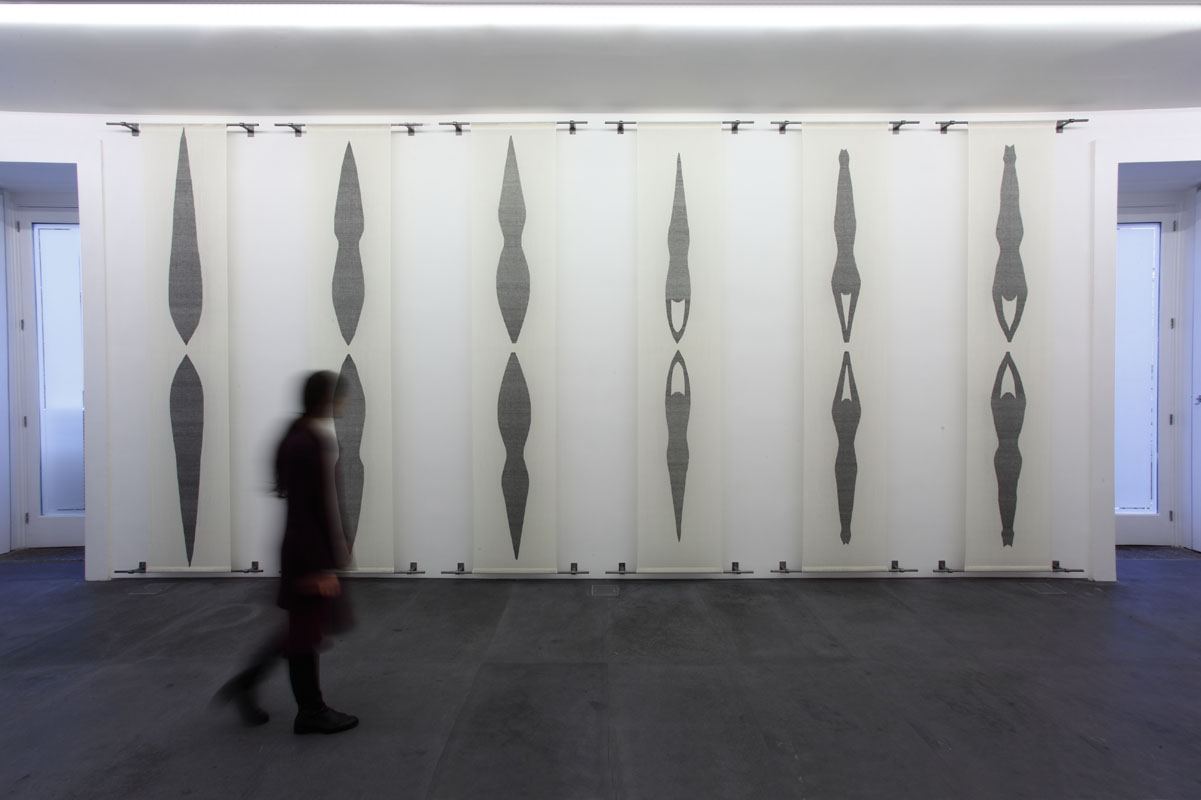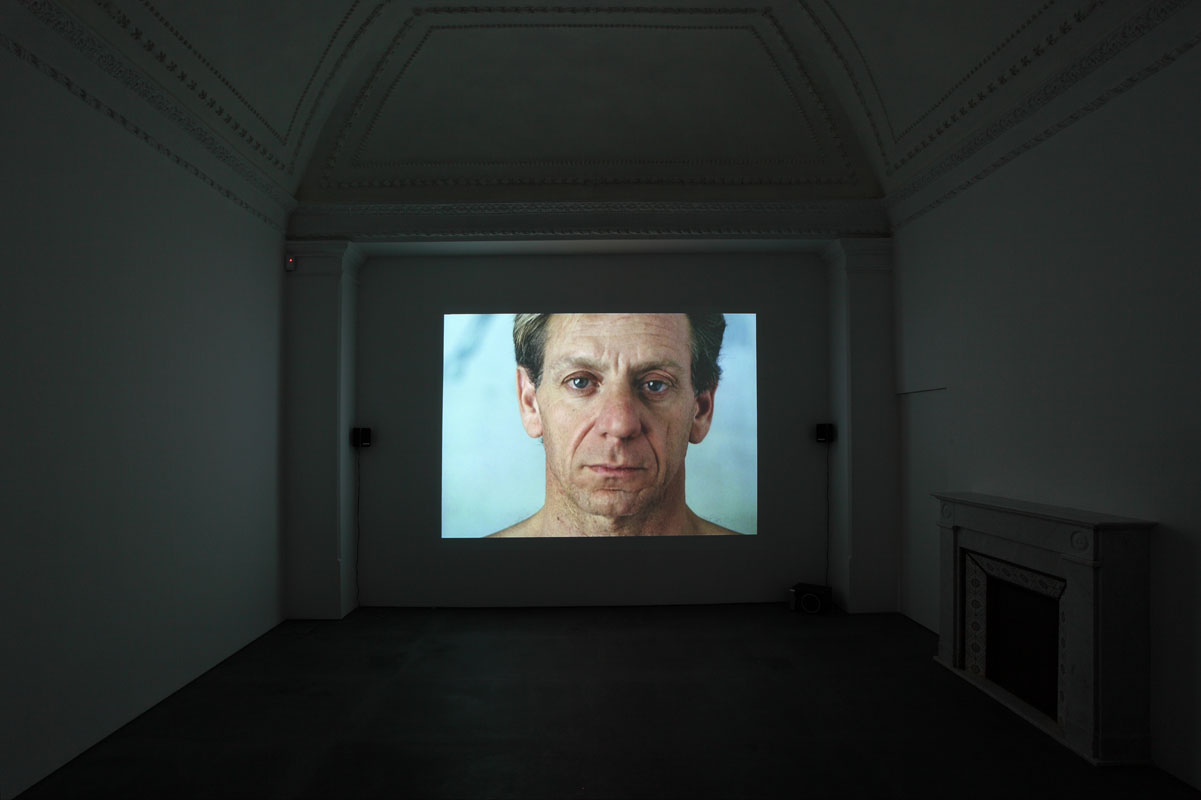The exhibition originates with the fresco on the stone slab cover of the Tomb of the Diver from Paestum where a young man is suspended between the column-diving board from which he has just jumped and the expanse of water below him. The leaping body, which traces a path through the air that hints, through the slight curve between arms and legs, at a perpetual circular movement, accompanies the story by Foster Wallace – which lends its name to the exhibition and the video; in the story, the initiation ritual of an adolescent on the path towards adulthood is consumed on the dizzying heights of a diving-board. A body dives and, as it removes its weight from the ground, is transformed into something else. Marzia Migliora applies words, signs and images around the gesture fixed in the video, which allude to a change of state. Forever Overhead sounds like a formula that suspends the action in that vacuum of air in the interval between the before and after, when one can no longer turn back and what lies beyond is unknown. It is a moment which is dilated to embrace thoughts and possibilities, in which fear and desire, life and death, the ordinary and the transcendental, prove to be inseparabile units of being. The exhibition opens with the work Blocco di partenza (The initial block), a title which keeps two opposing forces together: hesitation, the block and the necessary impetus to leap. The artist has made the work in lead, using her own weight as the unit of measurement for a platform similar to the starting blocks in a swimming pool. The words of the writer Erri De Luca - Alzo l’ultimo passo che depone in cima dove non è più suolo è aria (I take the final step that leads you to the summit where there is no longer ground but air) - accompany the first work, almost an admonition at the moment of the leap to go beyond the limit of fear and free oneself in the experience of air. The installation, whose title is taken from another quotation by the same author - Siamo fatti di questo d’aria e acqua come le comete (We are made of this air and water like the comets) - is a neon sign whose brightness fades until it disappears completely, only to turn on again in perpetual motion. Another image taken from history serves as the inspiration for the work Migratori senz’ali (Wingless migrants): six sheets hand-woven onto the loom which reproduce the phases of transformation of a falling body as they appear in the work Tuffatore linee sintetiche del movimento verticale (Diver: synthetic lines of vertical movement), made in 1931 by the futurist artist Thayaht. Over the speed of fall that redesigns the stylised profiles of the body, Migliora applies the slow movement of weaving, a gesture whose every stitch leaves an imprint. The exhibition ends with the installation Scomparire in un pozzo di tempo (Disappearing into a well of time). Visitors are invited to stand in the middle of the carpet, where the dive has left its trace in the concentric ripples of the water.
Marzia Migliora
Forever Overhead
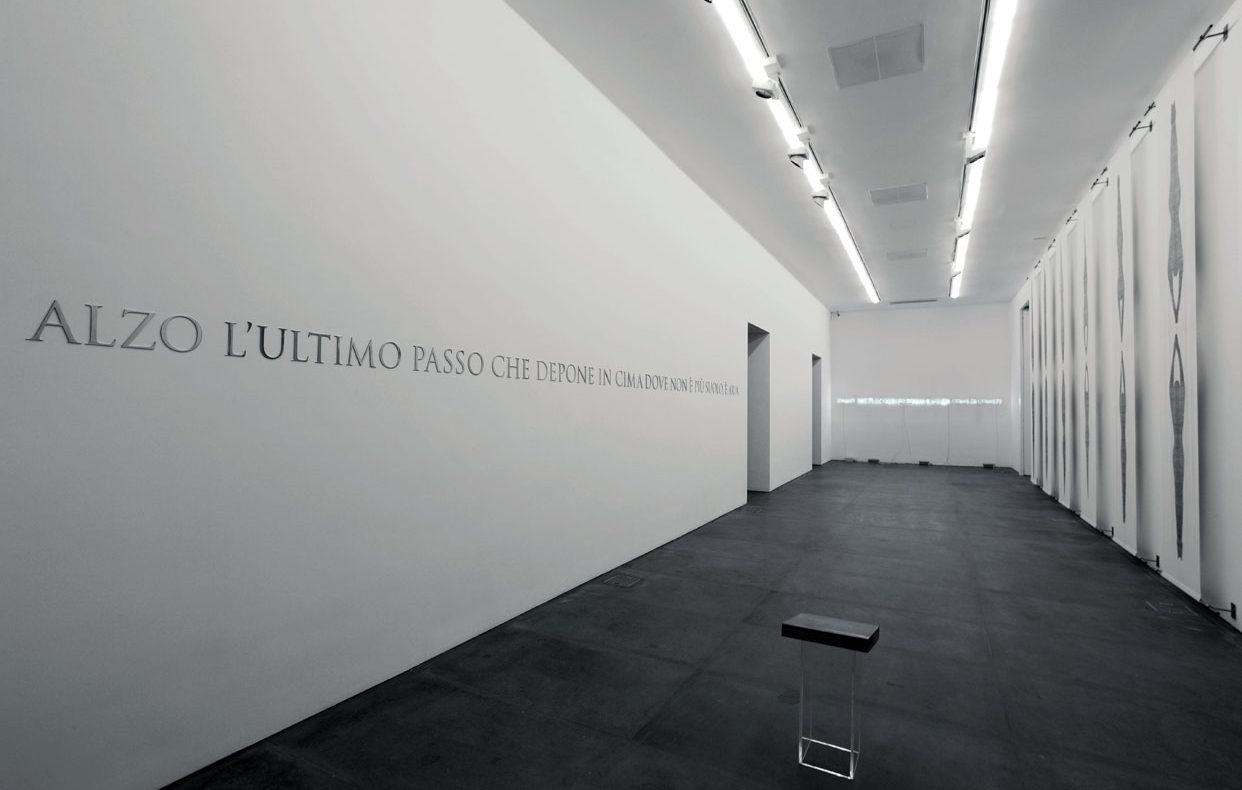
Photo Gallery
L'artista
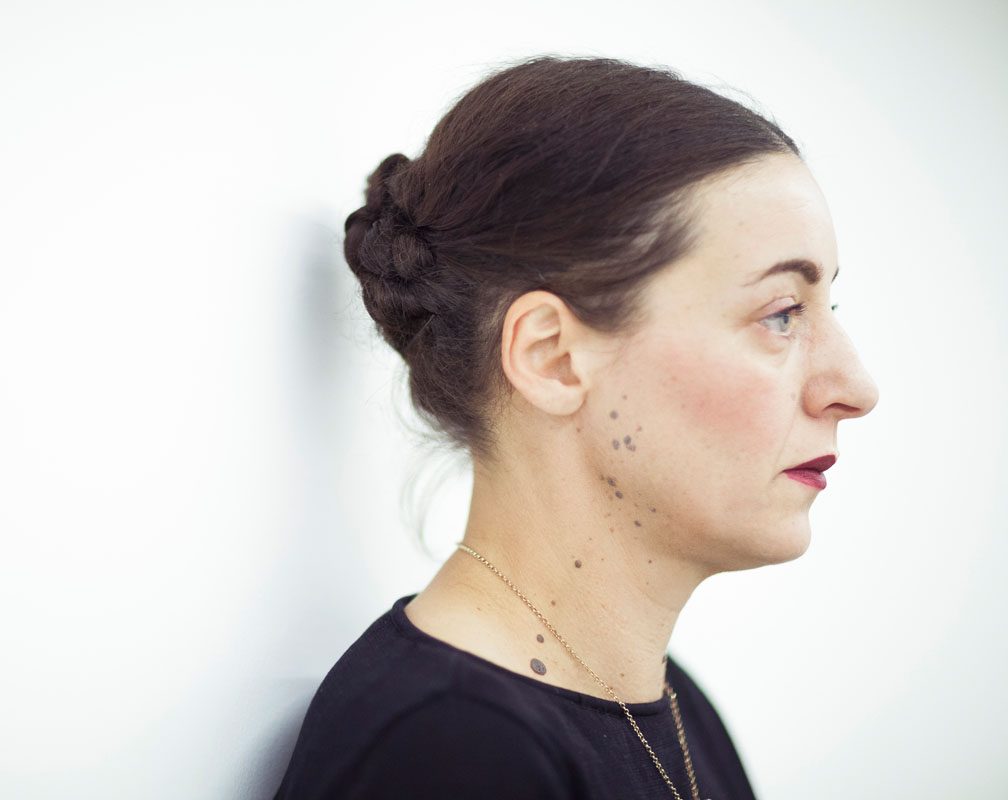
Marzia Migliora (born in Alessandria in 1972) lives and works in Turin. The work of Marzia Migliora is based on a wide range of languages including photography, video, sound, performance, installation and drawing. Her works originate from the close attention she devotes to individuals and their everyday lives. She has recently explored
